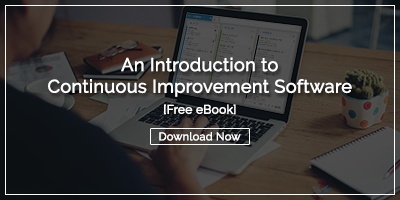 Thanks to Ken Bast, of Hospital Focus Five, for initially publishing this in his email newsletter.
Thanks to Ken Bast, of Hospital Focus Five, for initially publishing this in his email newsletter.
One of the key principles in the practice of "Kaizen," a style of continuous improvement that's a core of the Lean system for managing continuous improvement, is to make problems and ideas visible. This sounds simple, but it can be quite a challenging culture change in an organization!
One good suggestion is to do away with the suggestion box. This doesn't mean that managers no longer care about employee input. Quite the opposite is true! A Kaizen system can be far more engaging and effective for everybody involved.
While suggestion boxes are well intended, they rarely work in practice. One problem is that most organizations collect suggestions over time, with the box rarely opened. One of the problems with suggestion boxes is that the suggestions are not visible to the team while they are waiting to be read in a monthly or quarterly "batch." Hidden away in a locked box, suggestions are too easily ignored or forgotten. That makes it hard for managers to be held accountable by employees or senior leaders. Managers can claim, "Our employees don't have any ideas," even when that is rarely true.
One of the best paper-based alternatives to the closed suggestion box is the "idea board." I learned this concept from the author David Mann and utilized and adapted versions of this approach in many hospitals. The approach is also featured in my book Healthcare Kaizen. Using simple post-it notes or structured cards on a bulletin board provides transparency and accountability all around.
A team can see what problems have been identified and what ideas are being proposed. Assignment and implementation of these ideas can be done in a distributed way. Instead of approving (or, more often, rejecting) suggestions and assigning work in a top-down way, managers can use an idea board as part of their daily huddles and routines. Better yet, when employees have free time that pops up during the day, they can be self-directed and choose to work on things that are on this board. It's hard to ignore ideas that are staring down at you from cards on a visible board.
For all of their advantages over suggestion boxes, idea boards are only useful to people who are physically present in that team or in that department. It's extremely difficult to engage or collaborate with colleagues in other departments or other sites. You can see your own board, but you can't see the problems and ideas being generated by pharmacies at other sites within your health system.
The web and internet-based (or "cloud-based") systems can provide visibility beyond a local team. People can easily see what's being worked on locally and in other sites within their organization when they use a software solution for continuous improvement. The software solution must be selected carefully, however, as electronic suggestion box systems, while also web- and cloud-based, have many of the same pitfalls as physical boxes because they are built upon some of the same faulty management ideas. For example, electronic suggestion boxes (or "ideation systems") generally have ideas flow from front-line staff all the way up to the executive level or a committee. Not surprisingly, electronic suggestion boxes lead to just one to three percent of ideas being implemented – the same numbers as paper systems.
A good cloud-based software solution provides easy visibility to anybody in any web browser, and is built upon Kaizen principles.
These important principles include:
- Encouraging a quick response or input from a manager when an idea is submitted (within a few days, not months)
- Encouraging people to identify problems or opportunities for improvement, even if they don't have a solution (because an idea will probably come out of the discussion a local team will have about the problem)
- Leaving decision making and implementation responsibilities with the local team, as much as possible (instead of escalating everything)
- Allowing people to collaborate and share across department and site boundaries – spreading good ideas and leveraging our problem solving across sites instead of everybody solving the same problems independently.
If you're a small organization or a single team, then an idea board would probably work great for you. It's certainly better than a suggestion box that you can buy online. But, if you're a larger, multi-site health system, you definitely want to be using "the cloud" to amplify and accelerate your improvement and innovation activities. I don't know how a bulletin board possibly gives you the reach and spread of a software system.



Add a Comment